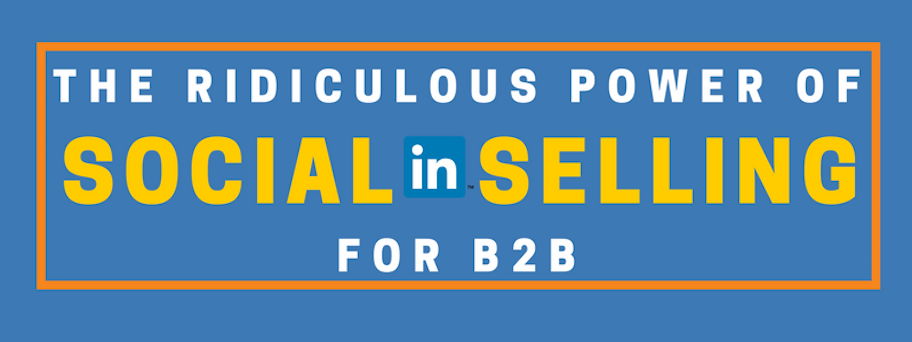The Surprising Power of Employee Advocacy on Social Selling

By Mostafa Razzak
Whether effective marketing has outright eluded your company or if you have an effective marketing strategy but you know it could be better, there is probably something very powerful you are missing — “Influencer Communications.”
Also known as “Influencer Engagement,” this powerful marketing approach combines next-generation and traditional marketing methods and funnels them to and through purchasing influencers of various types. While you might not be leveraging influencers of any type right now, there is one that is walking your hallways, working at your desks, and sitting across from you in meetings. It’s your own employees.
Indeed, as traditional marketing chiefly relies on a sales and marketing team, Influencer Communications can harness the social power of the many other people and departments within your organization that have the ability to positively influence customers and help usher in new business. Due to their relationships and social media connections to potential customers, your executives, business development team, and anyone else in the company that helps drive day-to-day operations are directly or indirectly connected to your target audience. As such, the goal for Influencer Communications is to get everyone in your company involved in outreaching to your target audience.
Influencer Communications First Steps
A prerequisite of Influencer Communications is having content your influencers can leverage. Content can vary depending on your industry and target customer, however it is common to develop assets such as case studies, white papers, blogs, videos, and photos. In most cases, it’s considered best practice to develop assets that fall into all of these categories. As we will discuss, having many assets will improve your influencers’ abilities to succeed. With some planning, building a cache of assets can be done quickly. For example, a single case study on a satisfied customer can also yield a variety of photos, videos, and blogs.
As you’re developing your assets, be mindful of the methods by which you plan to use them. The many social media platforms will become an integral part of your plan. Analysis of your target audience will tell you which you should be using — and avoiding. If your target audience isn’t using Instagram, it might not make sense to produce many photo-based assets.
As I mentioned in a previous article, LinkedIn has become an essential medium of B2B marketing. Hubspot found that traffic from LinkedIn generated the highest visitor-to-lead conversion rate at 2.74 percent, almost three times (277 percent) higher than Twitter (.69 percent) and Facebook (77 percent). If your company has any focus on B2B transactions, it would behoove you to focus on developing blogs and thought leadership articles that can be shared on LinkedIn.
Facebook can be a very powerful messaging medium. In a study conducted by Facebook, Unicorn: A System for Searching the Social Graph, the company indicated that the average Facebook user has approximately 130 friends. Leveraging those friends of your employees, and their friends, can have an exponential effect in spreading your message.
Once you identify the mediums best for your business and create assets, it’s time to get your employee involved. An influencer-based engagement effort should be clearly articulated to employees, easy for them to participate in, and potentially even incentivized. All assets should be easy to locate and your employees should be given tools to help them share the content quickly and easily.
For example, it is a best practice to not simply tell employees that assets exist, but to regularly provide a list of those assets (perhaps via a weekly email), along with pre-written comments they can use in their social media posts. Again, the goal is to make sharing your content as simple as possible for employees, removing guesswork. This method also has the benefit of creating a unified message.
Once content is shared, you should measure the effectiveness of the sharing and “likes” to ensure your content is effective and being shared with the right people via the right medium. There are, of course, tools to help this measuring and analysis of the effectiveness of your engagement.
Do Influencer Communications Work?
Recent studies have shown influencer-based marketing to outperform traditional methods by a wide margin. Collective Bias, a company specializing in influencing campaigns for brands and retailers, performed a recent study that underscored the value of influencer content. Results showed that consumers view content from influencers seven times longer than a digital display ad (two minutes, eight seconds versus 19.2 seconds). There’s also the Hubspot study mentioned earlier which shows the effectiveness of social sharing on LinkedIn. Very powerful, indeed.
All those statistics aside, we shouldn’t need any data other that common sense to know that Influencer Communications is effective. The method is related to the tried and true business axiom that word of mouth marketing is one of the most effective marketing methods. Research from Nielsen shows that 92 percent of consumers trust word of mouth recommendations over any other form of advertising. This data is supported by additional research from Ogilvy, Google, and TNS that showed that 74 percent of consumers identify word-of-mouth as a key influencer in their purchasing decision.
Influencer Communications takes the “mouth” and augments it with social media and other forms of electronic communication. Despite the change in how the message is being delivered, the outcome is the same: highly effective engagement that moves the engagement needle and helps bring in sales. What makes this method even more appealing is the delivery mechanism is already on your payroll.
